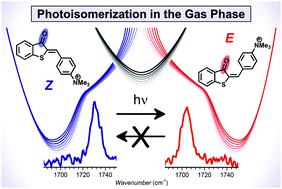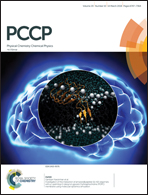Transforming hemithioindigo from a two-way to a one-way molecular photoswitch by isolation in the gas phase†
Abstract
Hemithioindigo compounds are attractive two-way molecular photoswitches combining stilbene and thioindigo parts connected by a C–C double bond. In solution, these photoswitches have been well studied. This study presents the investigation of a hemithioindigo derivative in the gas phase. Visible absorption spectra, measured by standard (visPD) and helium-tagging visible photodissociation (He-visPD) techniques were used to unravel absorption characteristics at the level of isolated molecules at 3 Kelvin. Comparison between the Z and E isomers shows a quite distinctive behavior upon visible light absorption. The Z isomer readily undergoes Z → E conversion in the gas phase, as evidenced by the changes in the helium-tagging infrared photodissociation (He-IRPD) spectra. Surprisingly, visible light excitation of the E isomer does not lead to efficient E → Z isomerization unlike in solution. Instead, the ions relax back to their ground state. Influencing the microenvironment of the E isomer by complexation with the highly polar betaine zwitterion resulted in absorption changes, albeit without activating the photoswitching process. Hence, isolation in the gas phase transforms hemithioindigo into a one-way molecular photoswitch. Furthermore, the combination of He-visPD and IRPD spectroscopies proved to be an excellent method for studying photochemical processes such as the double-bond isomerization in the gas phase.

- This article is part of the themed collection: 2018 PCCP HOT Articles


 Please wait while we load your content...
Please wait while we load your content...